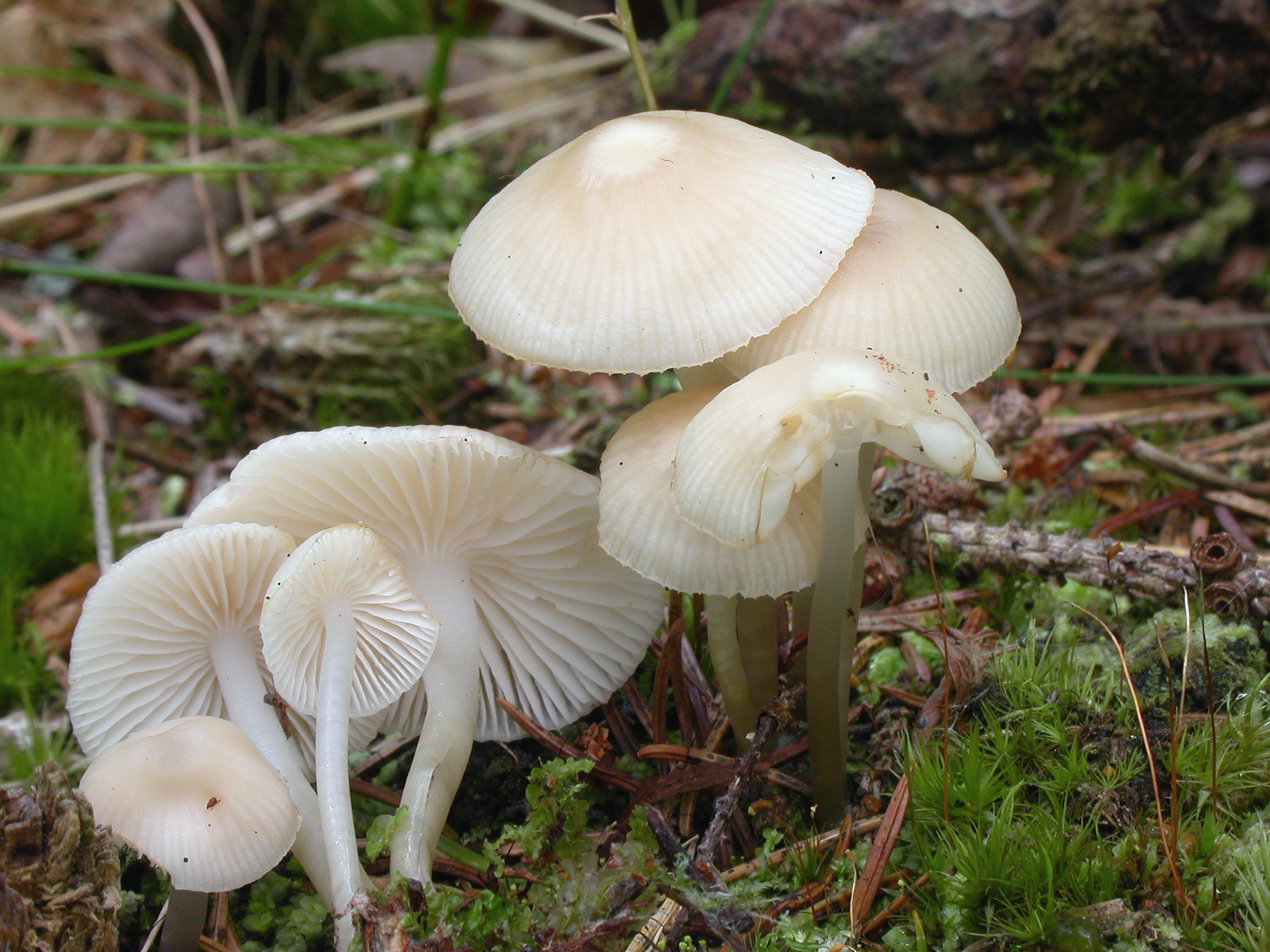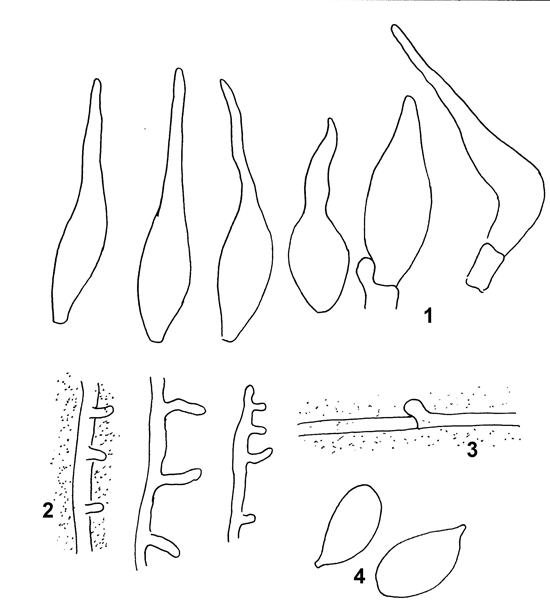Mycena laevigata
Mycena laevigata
- Innhold
- Description
- Ecology and distribution
Description
1. Cheilocystidia, 2. Hyphae of the cortical layer of the stem, 3. Hypha of the pileipellis, 4. Spores.
Cap 10-30 mm across, parabolical to convex, ±umbonate, or somewhat depressed, glabrous, ± sulcate, translucent-striate, somewhat lubricous when wet, hygrophanous, white to cream, often with a tinge of pale brownish pink at the centre, occasionally stained with brownish spots with age. Gills 23-28 reaching the stem, ±broadly adnate, decurrent with a tooth, white, with age sometimes slightly tinged with pink. Stem 30-70 x 1-3 mm, cylindrical, equal, glabrous, lubricous when wet, tough, white, darker to grey towards the base, especially in younger specimens, base often rooting, covered with whitish fibrils. Odour not distinct. Basidia 20-30 x 6-7.5 µm, slenderly clavate, 4-spored. Spores 7-9 x 3.8-4.8 µm, Q = 1.8-2.1, Qav ˜ 1.9, pip-shaped, amyloid. Cheilocystidia 25-35 x 5-9 x 1-3 µm, more or less forming a sterile band, fusiform to sublageniform, smooth, apically narrowed into a generally acute, at times more rounded, simple to furcate neck. Pleurocystidia absent. Hyphae of the pileipellis 1.5-4.5 µm wide, smooth, embedded in gelatinous matter. Hyphae of the cortical layer of the stem 1.5-3 µm wide, more or less embedded in gelatinous matter, smooth to sparsely diverticulate with excrescences 1.5-7 x 1-2 µm, terminal cells up to 5 µm wide, diverticulate. Clamps present in all tissues.
Ecology and distribution
In small groups to densely cespitose on decaying wood and stumps of conifers (Picea, Pinus). Late summer to autumn. Rather common in Norway.

